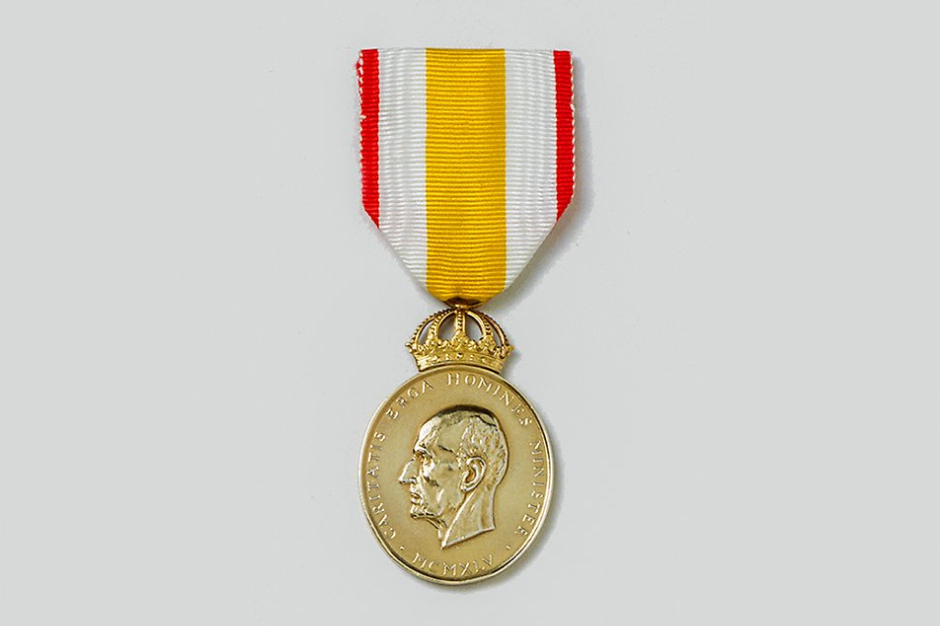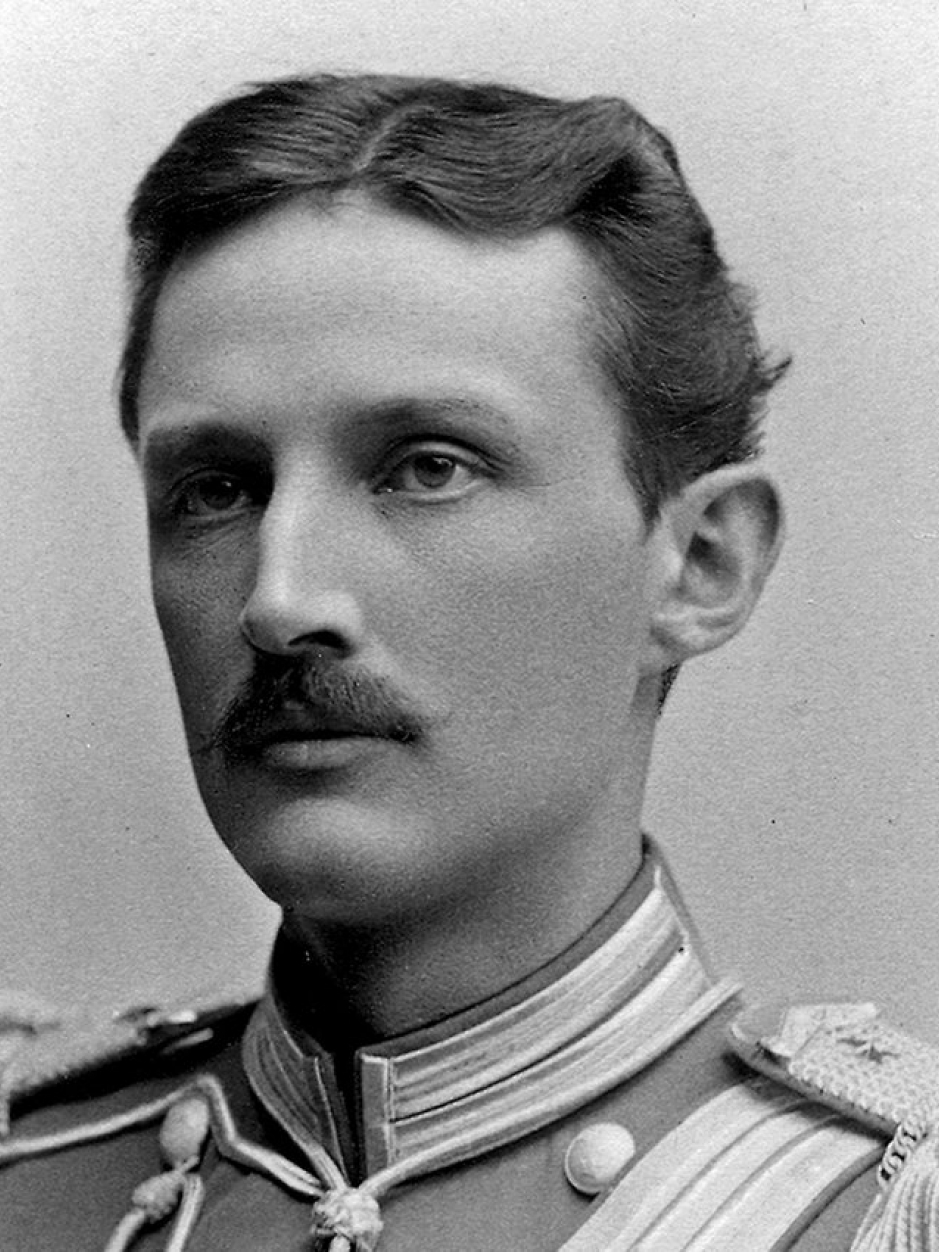The Prince Carl Medal

The Prince Carl Medal. Photo: Alexis Daflos/Kungl. Hovstaterna
The Prince Carl Medal was instituted by King Gustaf V on Prince Carl’s retirement as Chairman of the Swedish Red Cross in 1945. It is awarded in recognition of national or international humanitarian efforts.
The medal is awarded on December 1, the day on which it was instituted.
The medal is awarded in gold (gold-plated silver) in 8th size, and since 1975 has been worn on the chest in a white-yellow-white ribbon with red edges.
The medal is awarded sparingly.
Prince Carl 1861-1951
Oscar Carl Wilhelm was born in February 1861. He was the son of Oskar (II) and Sofia of Nassau. Prince Carl was Duke of Västergötland.
After graduating in 1880, he first studied in Uppsala University and then attended the Royal War Academy in 1884–85. For two years he was second-in-command of the Life Guard of horse and was nicknamed The Blue Prince because of its light blue uniform.
In 1897 he married Princess Ingeborg of Denmark and the couple had three daughters. The daughters entered into equal marriages; Margareta became Princess of Denmark, Märta Crown Princess of Norway and Astrid Queen of Belgium. The couple also had a son, Prince Carl.
In 1906, he assumed the presidency of the Swedish Red Cross's board of directors, whose international aid activities earned him world fame. Prince Carl became an honorary doctor of medicine in 1917 and an honorary member of the Swedish Medical Association in 1921. In 1945 he resigned from the Red Cross Board of Governors, whereupon Gustaf V instituted the Prince Carl medal for meritorious humanitarian activity in his honor. The prince died in October 1951.

Prins Carl portrayed 1892. Photo from the archive of the Bernadotte Library.